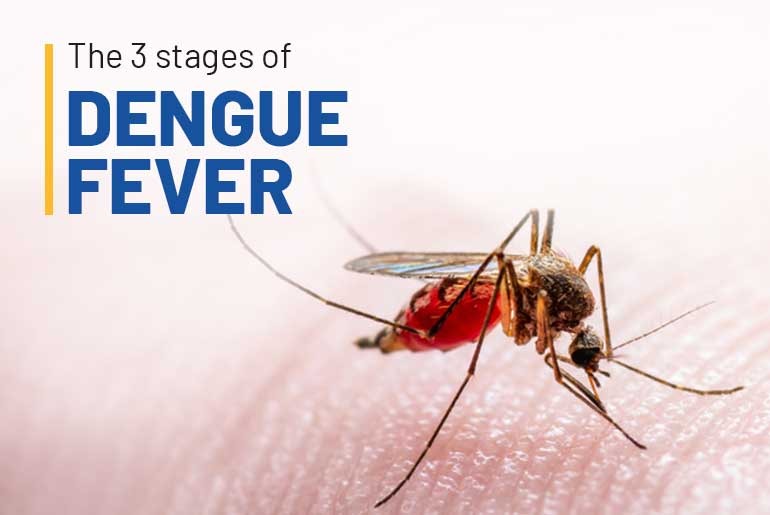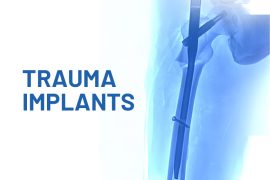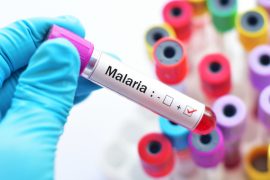Dengue fever is a prevalent mosquito-borne disease that sweeps through many parts of India, especially during the monsoon season. It is essential to understand the different phases of dengue: the alarming onset of high fever, the critical complications that may follow, and the gradual recovery process. This article guides you through each stage with actionable insights, aiming to enhance prevention and care. Whether you are a healthcare worker, a patient, or a vigilant family member, recognising the symptoms early can be crucial. Let us empower ourselves with the necessary knowledge to combat this pervasive illness effectively.
The Febrile Phase
The initial stage of dengue, known as the febrile phase, begins abruptly with a high fever, often reaching up to 40°C or 104°F. This phase is commonly accompanied by several other symptoms:
- Severe headache: Often described as a pain behind the forehead.
- Pain behind the eyes: This can worsen with eye movement.
- Muscle and joint pains: These can be severe and are commonly referred to as “breakbone fever.”
- Rash: Appears as a flush on the skin, which might spread.
Typically, this phase lasts for 2-7 days. During this period, it is crucial to monitor the patient for signs of dehydration and manage the fever. Hydration is particularly important, as fever can significantly increase fluid loss.
The need for medical attention cannot be understated during this phase. If you experience any of these symptoms, visiting a healthcare provider promptly is critical to receive the appropriate care and supervision, especially since these symptoms overlap with those of other febrile illnesses.
The Critical Phase
As the fever begins to subside, usually 3-7 days after the symptoms begin, patients enter what is known as the critical phase. Despite the decrease in fever, this phase is when the most severe complications can develop, characterised by:
- Severe abdominal pain
- Persistent vomiting
- Rapid breathing
- Bleeding gums
- Fatigue
- Blood in vomit or stools
This phase is particularly dangerous because of the risk of plasma leakage, fluid accumulation, respiratory distress, and severe bleeding. These are signs that the body’s circulatory system is becoming overwhelmed, and the following measures are crucial:
- Close medical observation: To monitor vital signs and detect signs of circulatory failure.
- Hospital care: This is for effective management of symptoms and to prevent further complications like shock.
This is a pivotal time frame in the management of dengue, requiring hospital resources for optimal care and frequent monitoring.
A concern during this phase is the decrease in the platelet count, increasing the risk of bleeding. Regular CBC testing is crucial during this phase to monitor platelet levels and ensure timely intervention if necessary.
The Recovery Phase
Following the critical phase, patients move into the recovery phase, which can last from 2-4 days or longer. During this phase, symptoms begin to resolve as the immune system gains control over the virus. Common observations include:
- Improvement in appetite
- Stabilisation of vital signs
- Decrease in fever
However, patients may experience prolonged fatigue and need continued rest. During recovery, the body reabsorbs the leaked fluids, and it is vital to maintain hydration and continue supportive care to ensure a complete recovery. Regular follow-ups may be necessary to monitor any potential post-recovery complications.
Preventive Measures
Preventing dengue fever is more effective than treating it. Key preventive measures include:
- Eliminating standing water: To reduce mosquito breeding sites.
- Using mosquito repellents: Especially during the day, when dengue mosquitoes are most active.
- Wearing protective clothing: Long sleeves and trousers can help prevent mosquito bites.
In addition, the development and availability of dengue vaccines in some countries represent a significant advancement in disease prevention. These vaccines can potentially reduce the severity and incidence of dengue infections.
Wrapping It Up
By recognising the symptoms early, adhering to preventive measures, and seeking prompt medical care, the burden of dengue can be substantially reduced. The cooperation of individuals and public health systems is essential in combating this disease, highlighting the need for awareness and action in the face of one of the fastest-spreading mosquito-borne diseases in India and around the world.
References:
https://www.ncbi.nlm.nih.gov/books/NBK143161/#:~:text=Febrile%20phase,injected%20pharynx%20and%20conjunctival%20injection.
https://www.ncbi.nlm.nih.gov/pmc/articles/PMC8813012/#:~:text=Typically%2C%20the%20clinical%20course%20follows,go%20through%20the%20critical%20phase.
https://www.cdc.gov/dengue/healthcare-providers/clinical-presentation.html
https://www.who.int/news-room/fact-sheets/detail/dengue-and-severe-dengue
https://www.mayoclinic.org/diseases-conditions/dengue-fever/symptoms-causes/syc-20353078





Comments are closed.